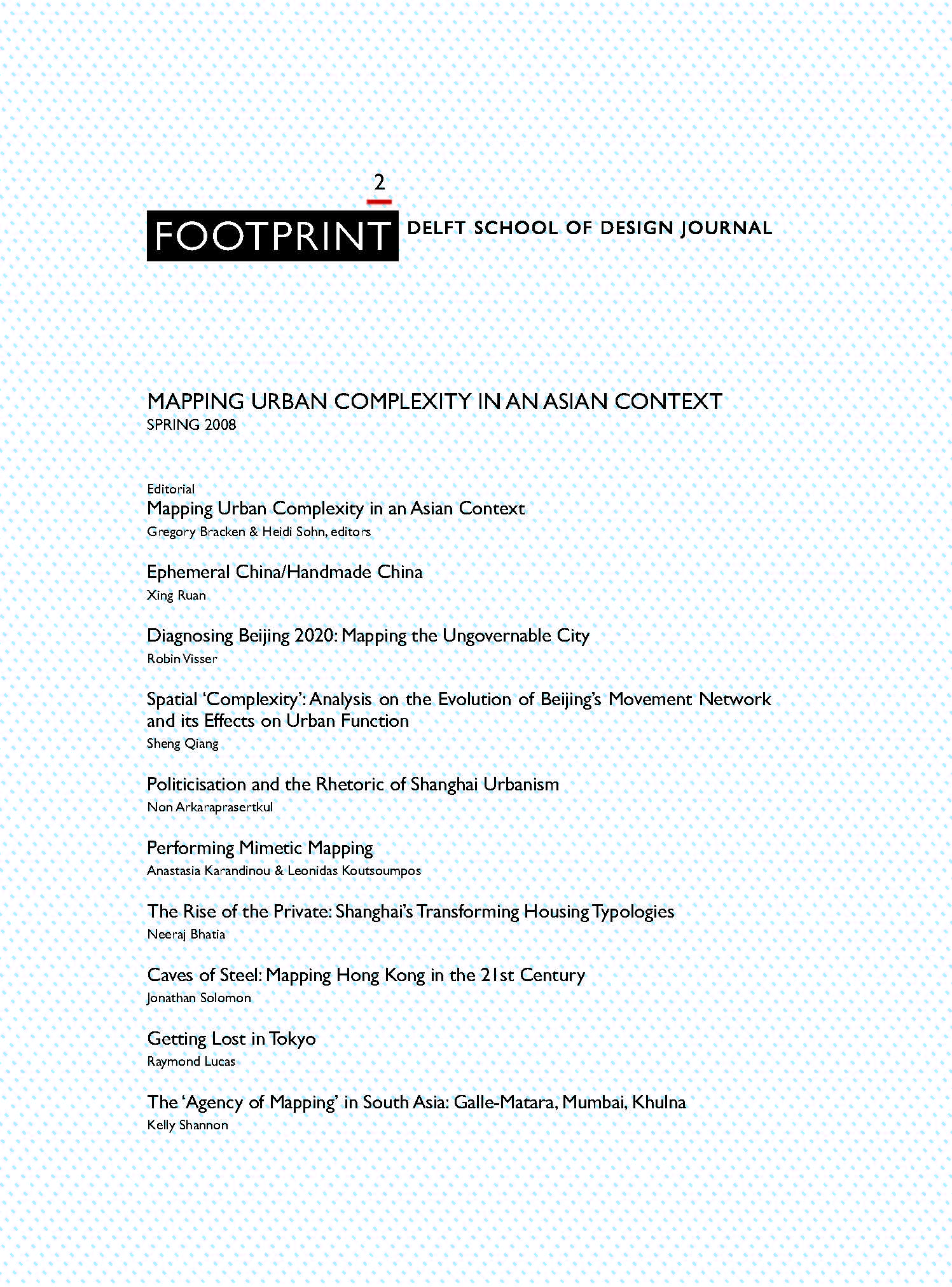Spatial ‘Complexity’: Analysis of the Evolution of Beijing’s Movement Network and its Effects on Urban Functions
DOI:
https://doi.org/10.7480/footprint.2.1.675Abstract
This paper is an attempt to read the dramatic transformations happening in Beijing from a spatial perspective. Based on a model developed by Spacelab, which understands scale as being constructed in movement and communications technologies, we try to represent this process on two levels: first, on the morphology of the movement network itself, I would like to show how technological development of highway, metro and bus systems change the way people move in the city; second, on the effects of changing movement networks, I would like to examine how shops and other public activities locate and relocate themselves within urban space. In general, Beijing is a good example, with a combination of old and new patterns of movement networks, whose spatial composition results in a different pattern for emerging economies and public activities compared with western city centres. However, it is still possible to uncover a strong and consistent logic based on the way individuals move and appropriate different scales of networks. In short, this paper will try to illustrate this difference based on the local pattern of space and explain the underlying, yet simple, spatial logic behind dynamic interaction between changing movement networks and the urban functions emerging from them.
Downloads
Published
Issue
Section
License
- Authors retain copyright and grant the journal right of first publication with the work simultaneously licensed under a Creative Commons Attribution License that allows others to share the work with an acknowledgement of the work's authorship and initial publication in this journal.
- Authors are able to enter into separate, additional contractual arrangements for the non-exclusive distribution of the journal's published version of the work (e.g., post it to an institutional repository or publish it in a book), with an acknowledgement of its initial publication in this journal.





